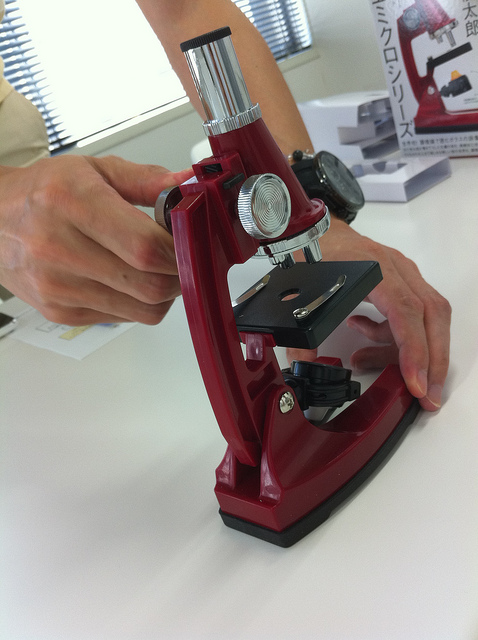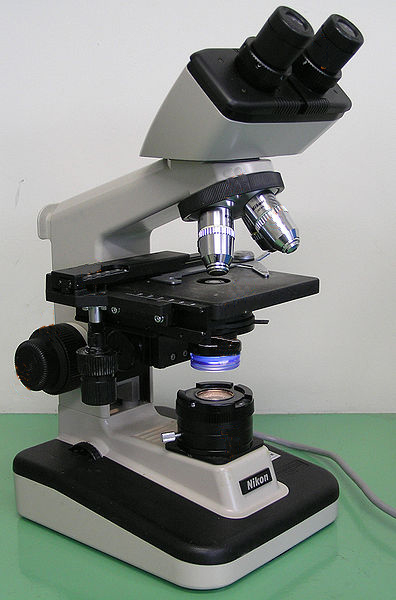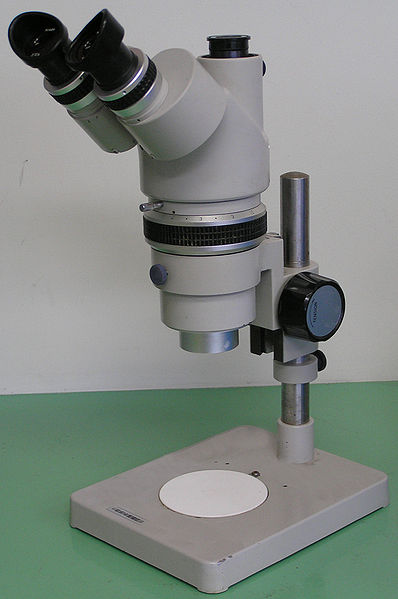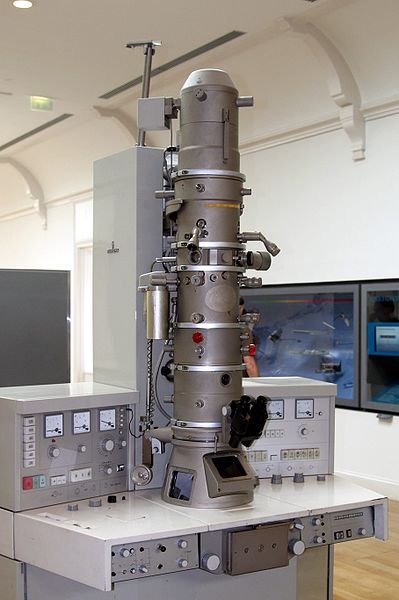Types Of Microscopes
A microscope is a device which is used in laboratories to observe objects which can not viewed with a naked eye. The purpose of a microscope is actually to give an enlarged image of the object being observed.
A microscope is one of the greatest inventions of man as because of this device man has made uncountable discoveries in science.
Ever since its invention it has helped scientists at various aspects of science to make unbelievable discoveries and today there are many different types of microscopes with more advanced magnification which allow scientists to discover objects which are far beyond the imagination of our mind.
A microscope generally consists of one, two or more lenses which magnifies the object, and disk on which the object is placed and a light or a radiation source.

Broadly, microscopes can be divided into two types based on their source of radiation, their magnification and resolution:
- Light Microscopes
- Electron Microscopes
Light microscopes use natural sunlight or a light from a bulb and have less resolution than the electron microscope. They are used for observing comparatively larger micro objects such as cells.
For very small particles such as electrons and biomolecules, electron microscopes are used. Common light microscopes are optical microscopes, compound microscopes and stereo microscopes.
Although there are other types of microscopes as well such as inverted microscopes, fluorescence microscopes and confocal microscopes, the above are the most commonly used microscopes.

Types Of Culture Media
- Culture Media
A culture media is special medium used in microbiological laboratories to grow different kinds of microorganisms.

Optical Microscopes
Optical microscopes are the oldest and the simplest microscopes. These microscopes consist of a simple lens and a light source which is the natural light. A mirror is also present to adjust the intensity of light.
Optical microscopes are simple and used to observe objects which may be invisible to the eye but are larger as compared to other micro objects, for example: a human or plant cell, amoeba, euglena etc.
Optical microscope only gives a silhouette or an outline of the object and does not focus deep into the structure of the objects. For greater studies other advanced microscopes are used.
Some times a very small particle such as a spore which can be seen as a small dot by a naked eye can be observed under optical microscope for studying its structure. In short they simply magnify the object and don’t go deeper into their structure.
Compound Microscopes
Compound microscopes follow the same principle as optical microscopes i.e. a light source allows the object to be observed and lens magnifies it, the differences are that the compound microscopes have two lenses and they have a higher resolution and a greater magnification.
The compound microscopes are the most commonly used microscopes in science laboratories. They are used in the labs of primary and secondary level classes and are most commonly used in bio labs.
Compound microscopes are used, mostly to study cells, tissues and microorganisms. These microscopes may show clearly the cells and their components, but the study of each individual component and study of chromosomes, genes, DNA etc is not possible by this microscope.
Never the less these microscopes are very important and are highly used. The resolution of compound microscopes is as high as advanced microscopes but it is enough for a good study of cells.

Dissection Microscopes
Dissection microscope which is also called a stereo microscope is another commonly used light microscope.
It also works on the same principle that the above mentioned light microscopes work but these microscopes are special in the regard that they produce a 3D image of the object.
The dissection microscopes, however, do not have a very high magnification as compared to compound microscopes.
The dissection microscopes have two eye pieces which allows the observer to get a 3 dimensional view of the object. They are used for dissection of large objects, microsurgery etc.
Famous Inventions Of The 20th Century
- Inventions Of The 20th Century
The 20th century was proved to be the century of some important inventions. These inventions including different electronic gadgets, tools, automobiles, etc.

Electron Microscopes
Electron microscopes are the most advanced microscopes. These microscopes allow the observation of the smallest of particles.
In electron microscopes a beam of electrons serves as a source for radiation. It has a great magnification and a very high resolution.
Electron microscopes are of two types:
- Transmission electron microscopes: they give a 2D detailed image of the specimen.
- Scanning electron microscopes: they give a 3D image. They also capture the image of the specimen.
Inventions Of 21st Century
- Inventions Of 21st Century
One of the biggest reasons for the advancement of human race has been its eagerness to know, to advance and to look for new things in every field of life.





